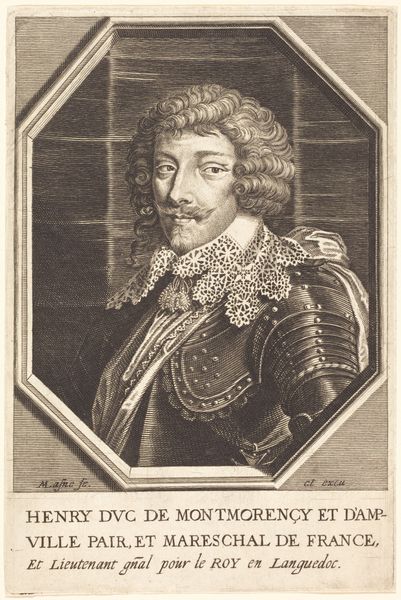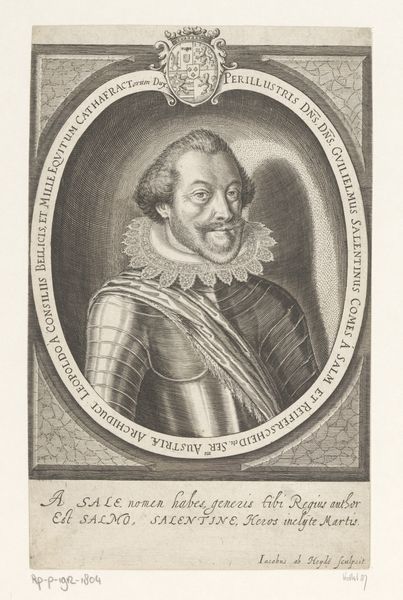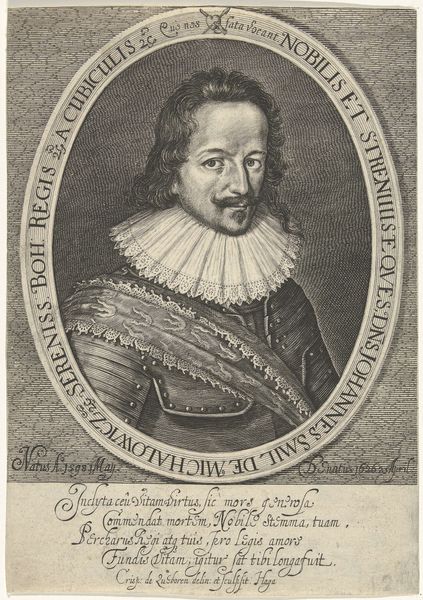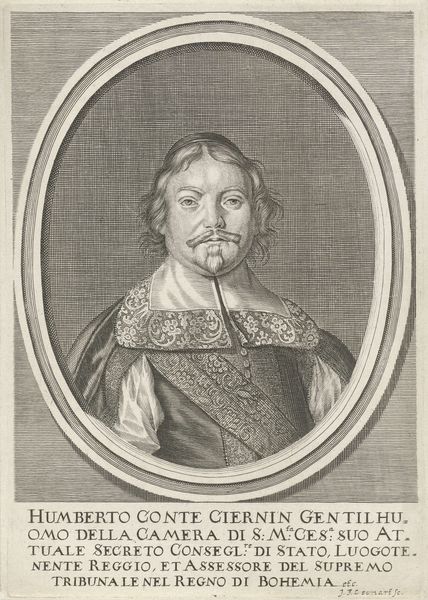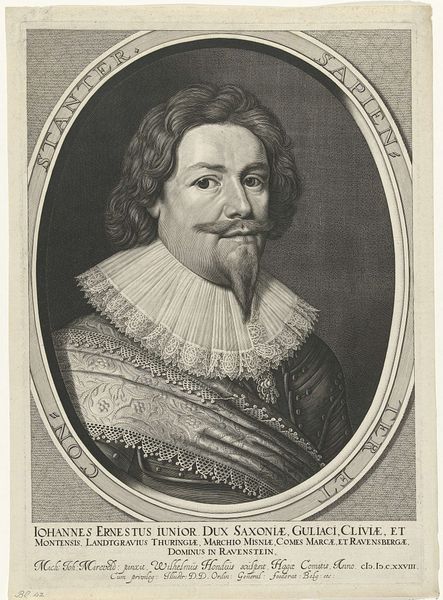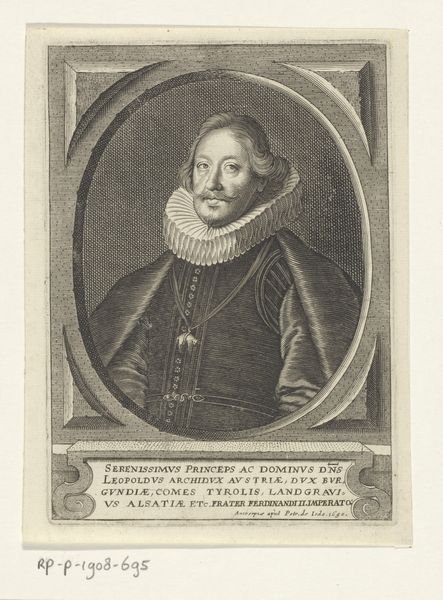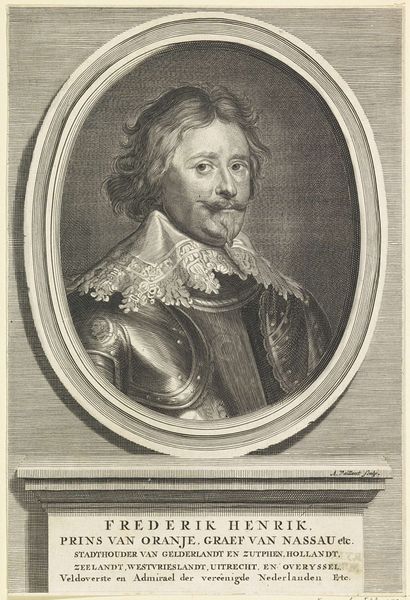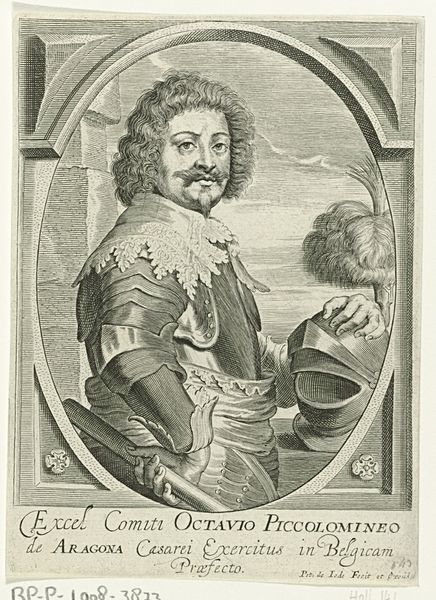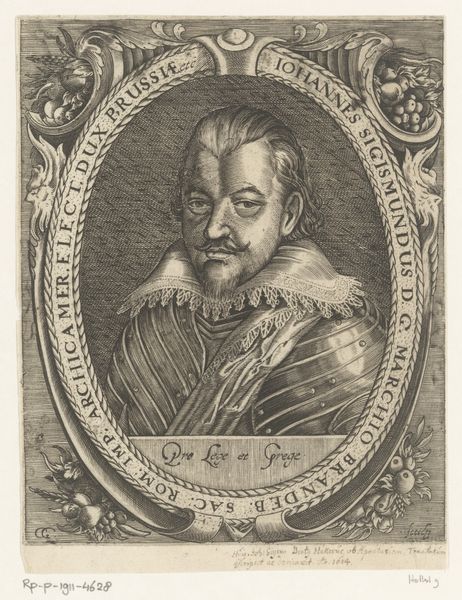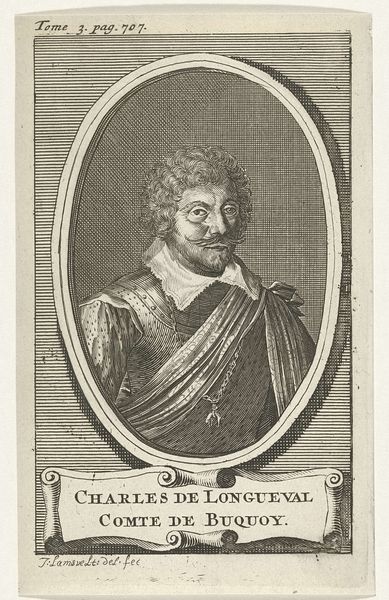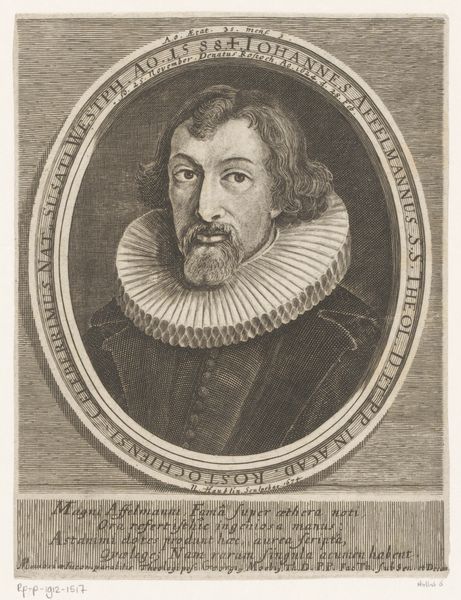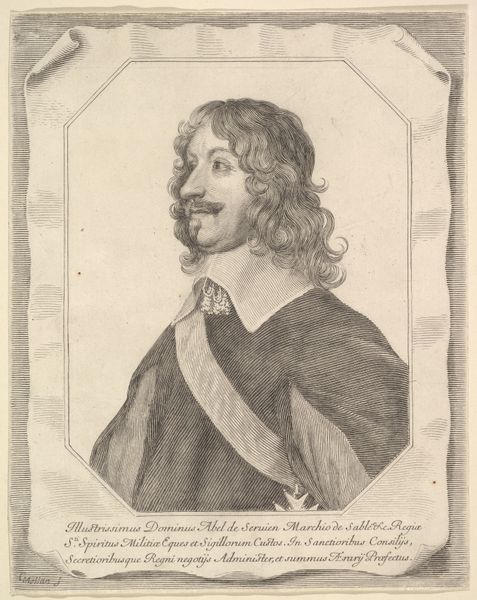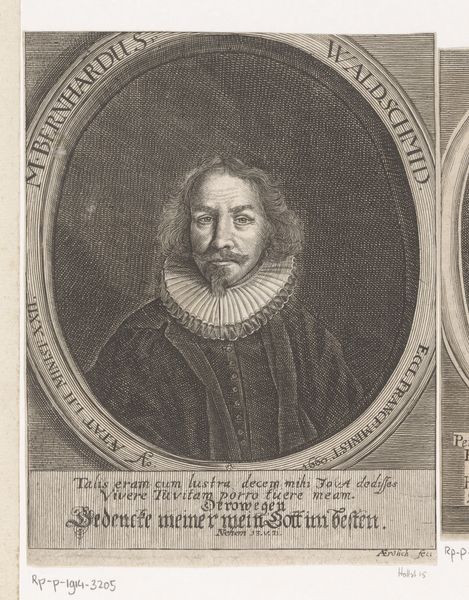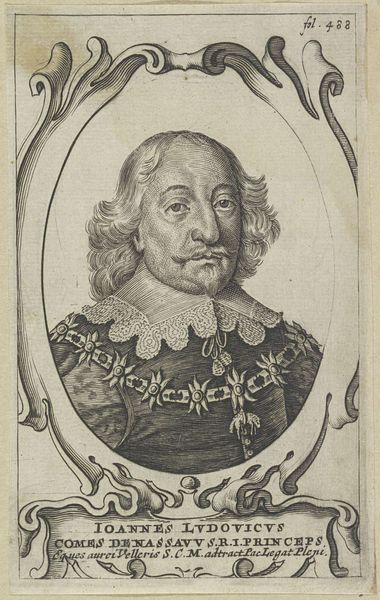
print, metal, engraving
#
portrait
#
aged paper
#
baroque
# print
#
metal
#
old engraving style
#
portrait reference
#
portrait drawing
#
italian-renaissance
#
engraving
Copyright: National Gallery of Art: CC0 1.0
Curator: Look at the density of lines used to create shading and form in this engraving; it really speaks to the meticulous labor involved in producing this portrait. Editor: There's such a commanding presence evoked here; you can almost feel the weight of tradition and lineage radiating from the sitter. Curator: Indeed. This print, depicting Paolo Giordano Orsini II, demonstrates the enduring appeal and material function of portraiture in memorializing prominent figures. We see the visual communication of status here is entirely mediated through metal and ink. Editor: The framing is striking—the oval within a geometric frame seems to encase him like a precious relic or some saint within a glorious shrine. What's the symbolism for you in the rendering? Curator: The act of engraving itself is significant. To make such a reproducible image ensures wider distribution. It allows his likeness, and therefore, his power to extend beyond his physical presence, beyond even this moment in time, in a physical and thus accessible form. Editor: You are speaking about the democratization through replication, yet I read so much symbolism in the deliberate crafting of this individual. The lace collar, for instance, seems almost overwhelming, as if meant to deliberately elevate his position. His moustache, his eyes. Even within the constraints of the print medium, there is individuality and force. Curator: Consider also how the act of production, the work of the engraver—identified here as Ottavio Leoni—and the conditions under which the artist was able to create this print contributes to our understanding of the period's visual culture and the commerce inherent in even "artistic" portraiture. Editor: Certainly the commercial aspect existed, but the artistic treatment transcends mere documentation. His presence, his inner world... there is a quest to render the invisible aspects visible within an accepted symbolic vocabulary. This gaze locks in! Curator: True, though the proliferation of copies suggests that it wasn’t just about representing one individual’s essence. Think about how portraits could standardize noble presentation in contrast to others; the distribution solidified social roles at scale, at production, in materiality. Editor: A provocative perspective! For me, stepping away from the print now, I find I'm haunted by that very direct gaze; all of the lines converge to animate a real presence across all the ages hence. Curator: It highlights, for me, how visual culture is inherently about the material culture and how it helps cement our cultural understanding through distributed objectification of symbols.
Comments
No comments
Be the first to comment and join the conversation on the ultimate creative platform.
